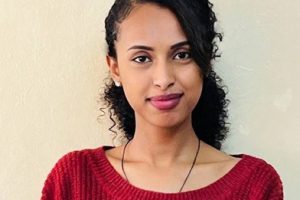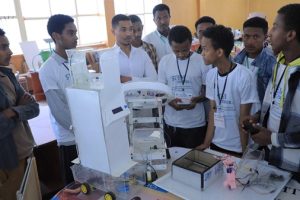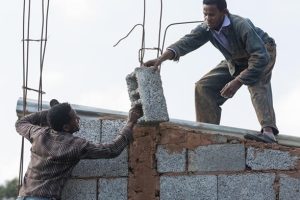
You shall not conspire against one another
You shall not betray one another
Let God be at peace with you
Let the Earth be at peace with you.
This ritual, stated by Mekuria Bulcha (Ph.D), is among the blessing moments on the celebration of Irreechaa, Oromos’ colorful festival. The ceremony brings historical and cultural significances in the minds of the audience who take part on the occasion.
Irreechaa (also spellled Irreessa), the Oromo’s thanks giving ceremony, was traditionally celebrated bi-annually in different parts of Oromia. The Irreecha Birra festival is celebrated in September and Irreecha Arfaasaa in April.
Although it was a non-political festival, the Irreechaa was suppressed by Ethiopian regimes. Brought back to life by a struggle for cultural revival which the Oromo have waged during the last fifty, the festival is now playing a significant role in the manifestation and preservation of Oromo national identity.
The festival in its traditional form is celebrated in different localities across Oromia. At the national level, it is an event that brings millions of Oromos from all over Oromia and non-Oromo visitors from other parts of the world to the shores of Hora (Lake) Arsadi in the city of Bishoftu, 47,9 km away southeast of Addis Ababa. As such, it has no parallel in Africa. The festival is celebrated not only in Oromia, but has become an event which is observed by tens of thousands of Oromos in many countries around the world.
What makes this year’s festival unique is that it is not confined to Bishoftu where it has been taking place for over two decades. Thanks for those who sacrificed their blood and irreplaceable life, it is to be celebrated at Hora Finfinnee (Addis Ababa) for the first time after over a century and half of ban.
In the pre-colonial past, the Irreecha Birra marked the end of the rainy season and the beginning of harvest season. It is
an Oromo custom to gather on the river banks and the shores of lakes and give thanks to Waaqa (God) for all his bounty and pray for Nagaa (peace) and Araara (reconciliation) among humans and with God.
Today, the festival has come to mark the end of the rainy season, and more. It marks the end of the cultural trauma which had affected the Oromo for about a century. It heralds and confirms that the time when the Oromo culture was seen as “pagan and primitive” is gone for good. It denotes victory over a history of cultural denigration.
The other appreciable feature of the festival is its aim which is full of blessing and prayer. Like in the past, the hayyuu (elders, wise men, the learned – both singular and plural) thank God and bless the nation as their ancestors did. They bless the nation; they remind their audience to uphold the Oromo ethics of safuu and nagaa (respect and peace), reconcile among themselves and pray to God to reconcile with them.
The collective memories of the nation, preserved in the ritual and symbols, then expressed in the words of the hayyuu, are supplemented by young artists who herald the revival of their heritage with songs and dances. Among the songs is Galaanee Bulbulaa’s “Kottaa ni irreefannaa, aadaa bade deeffannaa” which means (“Come let us celebrate Thanks giving; Let us revive our banned culture.” This and other songs focus on what the Oromos deserve regarding their cultural and religious values.
The artists herald the recovery, revival and survival of the Oromo culture from the destruction to which it was doomed by conquest and colonization. In short, they reflect the feelings which underpin the ongoing Oromo recovery from a century of cultural trauma.
The dynamics that are at work during the Irreecha festivals and what the participants experience is more than what the eye can see or the ear can hear. It is a joy and sense of belonging and experience of being part of a community that cannot be expressed fully in words. It is more! What the participants experience is a resurrection of a nation and a reconstruction of collective memory through the festival and the array of artifacts it displays.
One may ask regarding the political, social or religious background of the participants. It is important to note here that the Oromo celebrate the Irreechaa irrespective of their religious backgrounds. Whether they are Waaqeffataa, Christians or Muslims they participate in the festival. The moral counsel and ideals officiated by the hayyuu do not contradict the essence of any of the three religions. This is additional unique character of the festival and it implies that anyone, who appreciates justice, peace and sovereignty which the Oromo people enjoy, can participate without discrimination.
As an event which attracts millions of participants from near and far, the Bishoftu Irreechaa festival used to accommodate 2-4 million people. It is the only phenomenon in Ethiopia as well as in Africa millions of people from different religious background gather to one destination for the same goal and for one celebration at the same time.
One feature to be appreciated regarding Irreechaa festival is it is the manifestation of unity among people of not only the Oromos but others from different nations and nationalities. Since recently, people from other nations and nationalities have begun to celebrate Irreecha with the Oromo people. This by itself increases beauty and grace for the festivals.
Moreover, the cultural festival is potent to attract foreign tourists as they need it for its marvelous attraction. Therefore, though its main target is not over commercialization, it is becoming a major income generating event.
In addition to attracting foreign tourists, Irreechaa is promoting domestic tourism through mobilizing millions of people inland. This mass mobilization causes great financial inflow into the nation’s economy. With this, the festival stimulates various service providing sectors such as transport, hotels, art and trade. This ensures evenly distribution of wealth as the participants range from micro to macro enterprises.
To this end, Addis Ababa, while getting prepared to host this year’s festival for the first time, after more than a century, has to take into account income generation by providing services of different sectors in line with facilitating situations for the celebration.
A minimum of 5 million people are expected to attend Hora Finfinnee Irreecha from all over Oromia and other nations and nationalities. If a participant spends 1,000 Birr during the celebration, the 5 million people will spend a roughly calculated amount of 5 billion Birr in Finfinnee (Addis Ababa) and the surrounding towns. Spending such amount of money within a few days highly stimulates the city’s and the nation’s economy.
Above all, Irreechaa should be celebrated according to its own principles. These are peace, love, brotherhood, respect, help each other and goodness. These principles have to be honored individually and collectively.
At the moment, Irreechaa is known for being Oromo cultural and religious festival but at the same time, many other nations and nationalities are participating on the occasion so that, it is knocking down wall of contrast. If it is celebrated nationwide as a “Thanks giving Day,” many believe that it will play important role in strengthening relationship among Ethiopians and building the country’s image.
The Ethiopian Herald October 5/2019
BY BACHA ZEWDIE





